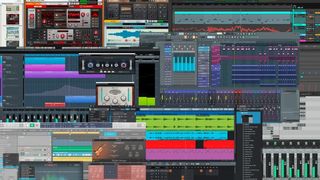Ableton Live 10.1 released: here's what you need to know about this free DAW update
Wavetable import, new devices and VST 3 support
Ableton has released Live 10.1, the first full point release update to its Live 10 DAW. This is a free update for Live 10 users.
There are some significant upgrades in here, starting with the option to import your own wavetables or any sample into the Wavetable synth’s oscillator section. There are new Channel EQ and Delay devices, the former being a simple EQ and the latter combining Simple Delay and Ping Pong Delay along with various feature upgrades.
Live 10.1 gets new automation options, too. You get a palette of automation shapes to choose from, the ability to stretch and skew automation and enter values with your numerical keypad, and easier access to clip modulation in the Session View. Live 10.1 can also detect curved movements inside automation and merge multiple breakpoints into C- and S-shapes.
Navigating your projects should be easier thanks to improved zooming and scrolling functionality. This includes streamlined keyboard shortcuts, pinch zooming on compatible computers, a resizable Arrangement Overview window, and more.
Elsewhere, enhancements include the options to freeze tracks that contain sidechain routing and to export single tracks and groups with return and master effects applied.
Finally - but notably - Live 10.1 supports VST 3 plugins. This should please Steinberg, which is looking to phase out the VST 2 standard.
If you own Live 10 and have auto-update turned on, Live 10.1 should install the next time you open the software. If you don't, you you should visit your account page.
Get the MusicRadar Newsletter
Want all the hottest music and gear news, reviews, deals, features and more, direct to your inbox? Sign up here.
Find out more on the Ableton website.

I’m the Deputy Editor of MusicRadar, having worked on the site since its launch in 2007. I previously spent eight years working on our sister magazine, Computer Music. I’ve been playing the piano, gigging in bands and failing to finish tracks at home for more than 30 years, 24 of which I’ve also spent writing about music and the ever-changing technology used to make it.











